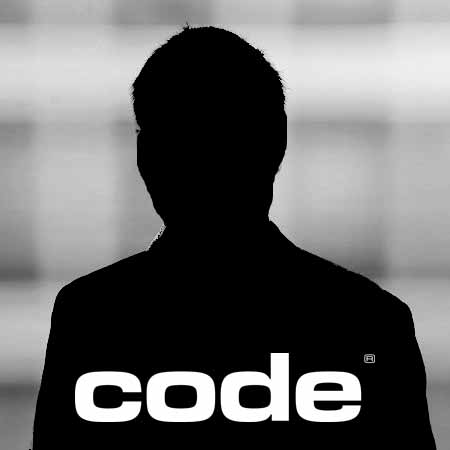Barcode Readers Digitalize Medication Workflows at Royal United Hospitals Bath
Code Data Capture Starts RUH's Transition to Paperless Documentation
Note: This 2024 healthcare use case catalogs the successful implementation of Code's CR2600 Barcode Reader into a healthcare system for the 2017 launch of an electronic prescribing and medicines administration program. Following years of reliable, high-performance data capture, the hospital group has started migrating to Code's flagship, the CR2700 Barcode Reader.

Bath, England's world-famous hot springs have created a 2,000-year legacy of wellbeing that runs deep at the Royal United Hospitals Bath NHS Foundation Trust (RUH). Guided by the statement "RUH, Where You Matter," 5,800 staffers deliver acute and non-acute care to 500,000 residents across a regional network featuring two hospitals, multiple birth centres and two maternity units. In balancing inclusivity with excellence across its broad footprint, RUH turned to Code Corporation's barcode readers in 2017 and hasn't looked back.
The Challenge: Integrating an ePMA for Care Excellence and Safety
In 2016, the United Kingdom trialed a "Scan4Safety" program at six hospitals. The initiative cut medication errors 76% by using barcodes to match patients to doses. In 2017, RUH administration launched an in-house electronic prescribing and medicines administration (ePMA) program.
With barcode scanning, RUH's interdisciplinary ePMA team sought to:
- Digitize patient data, such as medication dosage and times, freeing nurses from handwritten documentation.
- Enable pharmacists to track medication delivery, storage and administration.
- Allow IT to instantly transmit patient and medication data across RUH's network for continuity of care.
However, to realize ePMA's benefits, the team needed high-performance, healthcare-focused barcode scanners.

The Solution: Code's Advanced Healthcare Barcode Readers
"We needed to scan 2D QR codes at the patient's bedside in a reliable manner," recalls Liz Staveacre, RUH's chief nursing information officer. "The hardware had to be robust, cleanable and use a simple charging solution."
With these needs in mind, Staveacre added, "Code scanners were identified as the preferred product from the project's inception."
Code's CR2600 Barcode Readers were on RUH's radar thanks to a reputation for performance and reliability. However, the ePMA group tested healthcare scanners from all major manufacturers. According to Simon Buchan, RUH's senior IT technician, the value chain analysis team closely scrutinized each for:
- Functionality: ePMA's success required easy-to-charge devices that wouldn't hinder workflows. Code impressed with on-unit battery gauges and a no-hassle charging cradle with intuitive charge indicators: select cradles even paged misplaced readers.
- Durability: High-efficiency healthcare workflows are demanding. CR2600 led testing with:
- An IP65-rated housing that shielded internals from spills.
- A 1.82-meter (6-foot) drop rating, which mimicked mishaps while scanning IV bags.
- CodeShield® Level 3 Plastics that endured RUH's disinfection protocols. These disinfectant-ready plastics outperformed "anti-microbial" ones with dense polymers that cleaners can't penetrate.
- Chemicals "yellow" lesser plastics, making them appear unsanitary and causing cracks that permit device-damaging chemical seepage.
- Value: RUH's team determined that Code's devices provided a superior price-to-performance ratio by blending usability with exceptional first-time scan rates. Beyond helping nurses achieve worry-free workflows, CodeShield bolstered RUH's ongoing goal of reducing hospital-acquired infections.
"What tipped the scales in Code's favor was a good design," Buchan recalls. "The more robust product provided better value in the long run."
The Outcome: Data-driven Gains in Healthcare Quality
RUH partnered with Code to integrate the scanners onto "computer on wheels" nursing carts and into the patient record system. According to David Skirrow, RUH's lead pharmacist for ePMA, a smooth implementation accelerated RUH's paperless strategy through accuracy, real-time updates and auditable data.

As workflows have evolved since 2017, RUH's Parry Ward has achieved a 70% improvement in patient compliance through care quality. Similarly, RUH's Older Person's Assessment Unit noted a 60% jump in compliance — significant in an area where 19.5% of residents are 65 or older.
Given their satisfaction, RUH has since replaced many CR2600s with Code's purpose-built CR2700 Barcode Reader. The successor adds features like Bluetooth® 5 for greater security, throughput and transmission range. CR2700 also provides a hassle-free inductive charging base that eliminates exposed charging pins on the barcode readers for even greater longevity.
Recognizing the therapeutic benefits of Bath's mineral-rich hot springs, ancient Celts, Romans and royalty transformed the hamlet into a destination that UNESCO recognizes as a World Heritage Site and one of the "Great Spa Towns of Europe." Bath's commitment to wellness will also undoubtedly continue to thrive through RUH's people-first culture and Code's robust and reliable barcode readers that safeguard patients and offload nurses with every scan.
Explore how RUH makes Bath one of the healthiest places to live and work. Contact Code to digitize your site's workflows for increased safety and efficiency through data capture.


